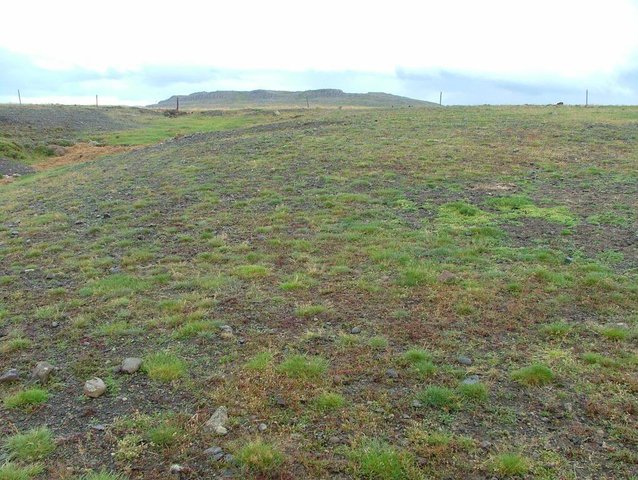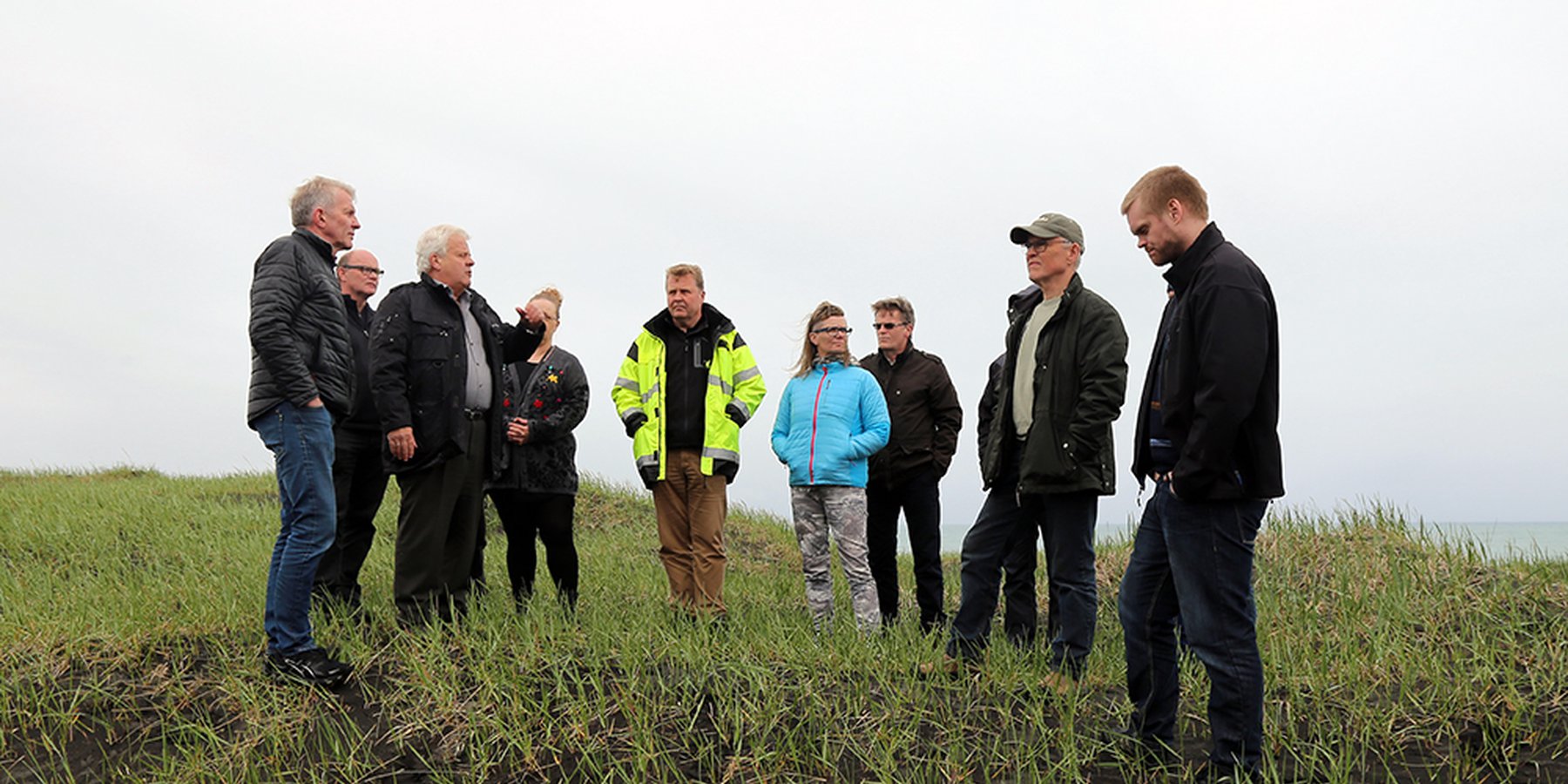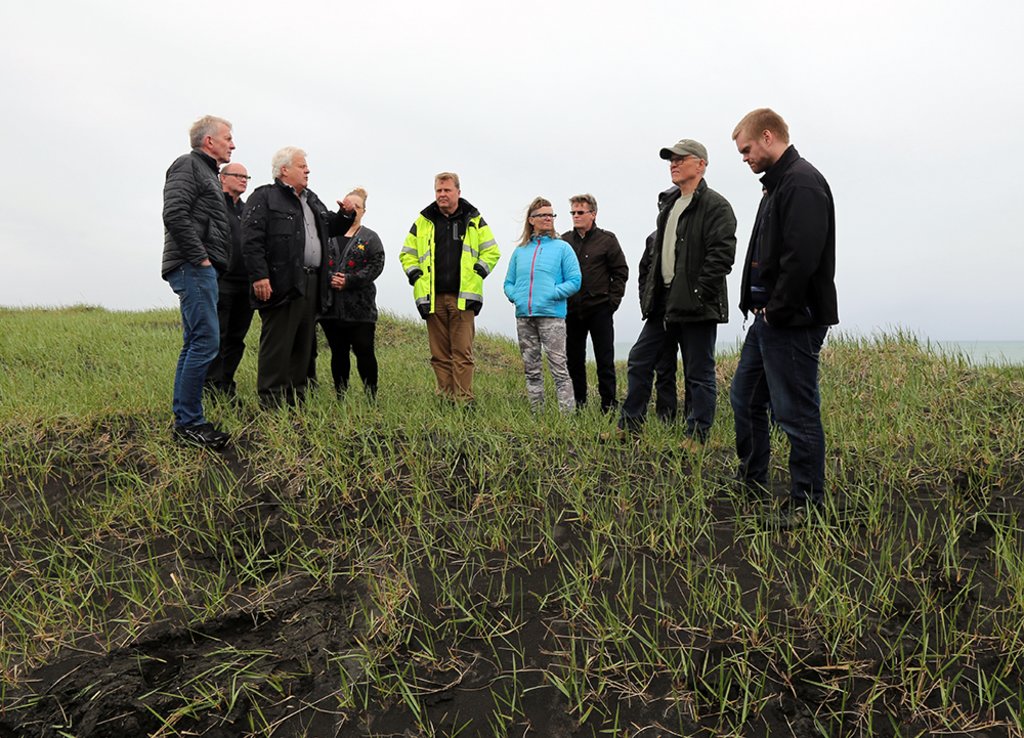Participatory cost-sharing restoration programme [Iceland]
- Creation:
- Update:
- Compiler: Thorunn Petursdottir
- Editor: –
- Reviewers: Jan Reichert, Hanspeter Liniger
Farmers Heal the Land
approaches_2599 - Iceland
View sections
Expand all Collapse all1. General information
1.2 Contact details of resource persons and institutions involved in the assessment and documentation of the Approach
Key resource person(s)
SLM specialist:
1.3 Conditions regarding the use of data documented through WOCAT
The compiler and key resource person(s) accept the conditions regarding the use of data documented through WOCAT:
Yes
1.4 Reference(s) to Questionnaire(s) on SLM Technologies

Fertilizing and re-seeding degraded rangelands [Iceland]
Rangeland restoration - Spreading small portions of inorganic fertilizer and seeds on degraded rangelands
- Compiler: Thorunn Petursdottir
2. Description of the SLM Approach
2.1 Short description of the Approach
Collaboration between farmers and a governmental institute on rangeland restoration and improved land management
2.2 Detailed description of the Approach
Detailed description of the Approach:
Aims / objectives: FHL is a governmental cost-sharing programme operated by the SCSI and run at national level. The FHL programme has been ongoing since 1990. It started as an experimental programme in Northeast Iceland, but couple of years later it was extended nationwide. It builds on voluntary participation of farmers who want to restore damaged rangelands in the lowland. The programme was established foremost to ease cooperation and strengthen social bonds between the SCSI and sheep farmers. Nevertheless, increased rangeland restoration and improved grazing management were also key targets underpinning the establishment of the FHL initiative, and formed the backbone of its prime policy.
Methods: The FHL programme is run by the Soil Conservation Service of Iceland (SCSI) and targets large-scale rangeland restoration, primarily among sheep farmers. The programme builds on voluntary approaches and uses direct and indirect incentives to motivate its participants. Farmers who want to participate apply for membership of the SCSI. The SCSI evaluates the condition of potential restoration areas and decides if they meet requirements. Each participant receives, annually, a fixed subsidy to purchase fertilizer and if needed, commercial grass seeds. Participants in the FHL project are visited approximately biannually by a regional SCSI advisor that estimates the restoration progress, discusses next steps and consults the participants on rangeland management related issues. Usually, each restoration area is treated for a couple of years before it is considered to have passed the first level of the restoration process. The restoration areas are mapped, and based on the maps participants asked to make a 3-5 year long implementation plan.
Role of stakeholders: As land stewardship plays a vital role in this programme, the role of the primary stakeholders (the farmers) is fundamental. They indeed drive the programme, although they get professional guidance and support from the extension offices of the SCSI. They are responsible for all implementation and land management on a local scale, within their own holdings.
Other important information: no further information
2.3 Photos of the Approach
2.5 Country/ region/ locations where the Approach has been applied
Country:
Iceland
Region/ State/ Province:
Rangarthing Ytra
Further specification of location:
Rangarvellir
2.6 Dates of initiation and termination of the Approach
Indicate year of initiation:
1990
2.7 Type of Approach
- recent local initiative/ innovative
2.8 Main aims/ objectives of the Approach
The Approach focused mainly on SLM with other activities (rangeland restoration, sustainable land management, participatory approaches, stakeholder involvement)
To improve the ecological condition of the degraded rangelands for future generations. To facilitate behavioral changes toward more sustainable rangeland management.
The SLM Approach addressed the following problems: The main problems to be addressed by the approach were severe soil and vegetation degradation that substantially reduced biomass productivity, lack of financial support and local advisory system
2.9 Conditions enabling or hindering implementation of the Technology/ Technologies applied under the Approach
social/ cultural/ religious norms and values
- hindering
Treatment through the SLM Approach:
availability/ access to financial resources and services
- hindering
the approach provides subsidies to participants
Treatment through the SLM Approach:
institutional setting
- hindering
Establishment of extension offices that provide advisory service on restoration and SLM technologies and approaches, free of charge to all land users.
Treatment through the SLM Approach:
legal framework (land tenure, land and water use rights)
- hindering
Treatment through the SLM Approach:
knowledge about SLM, access to technical support
- hindering
Establishment of extension offices that provide advisory service on restoration and SLM technologies and approaches, free of charge to all land users.
Treatment through the SLM Approach:
workload, availability of manpower
- hindering
Treatment through the SLM Approach:
3. Participation and roles of stakeholders involved
3.1 Stakeholders involved in the Approach and their roles
- local land users/ local communities
Main actors - voluntary work, mostly at their own expenses
- SLM specialists/ agricultural advisers
- local government
Provide small scale funding
- national government (planners, decision-makers)
Main funding contributor - advisory system - local support
- international organization
3.2 Involvement of local land users/ local communities in the different phases of the Approach
| Involvement of local land users/ local communities | Specify who was involved and describe activities | |
|---|---|---|
| initiation/ motivation | self-mobilization | |
| planning | interactive | |
| implementation | self-mobilization | |
| monitoring/ evaluation | passive | |
| Research | none |
3.4 Decision-making on the selection of SLM Technology/ Technologies
Specify who decided on the selection of the Technology/ Technologies to be implemented:
- mainly SLM specialists, following consultation with land users
Explain:
Decisions on the method of implementing the SLM Technology were made by mainly by land users supported by SLM specialists
4. Technical support, capacity building, and knowledge management
4.1 Capacity building/ training
Was training provided to land users/ other stakeholders?
Yes
Specify who was trained:
- land users
- field staff/ advisers
- Researchers
Form of training:
- on-the-job
- farmer-to-farmer
- demonstration areas
- public meetings
- courses
Form of training:
- local advisors that visit/contact all participants
Subjects covered:
E.g. the role of ecosystem services for human well-being, ecosystem resilience and natural hazards, the importance of proper grazing management and the importance of merging local and external knowledge to secure more effective long-term social-ecological progress.
4.2 Advisory service
Do land users have access to an advisory service?
Yes
Describe/ comments:
Advisory service is very adequate to ensure the continuation of land conservation activities
4.4 Monitoring and evaluation
Is monitoring and evaluation part of the Approach?
Yes
Comments:
bio-physical aspects were regular monitored by project staff through observations; indicators: visual estimation
bio-physical aspects were ad hoc monitored by other through measurements; indicators: Researchers of the SCSI
technical aspects were ad hoc monitored by project staff through observations; indicators: Researchers in collaboration with the SCSI
socio-cultural aspects were ad hoc monitored by other through measurements; indicators: Researchers in collaboration with the SCSI
economic / production aspects were ad hoc monitored by other through observations
area treated aspects were monitored by project staff through observations
There were no changes in the Approach as a result of monitoring and evaluation
There were few changes in the Technology as a result of monitoring and evaluation: Reduced amount of fertilizer and seed when restoration areas are treated
4.5 Research
Was research part of the Approach?
Yes
Specify topics:
- sociology
- ecology
Give further details and indicate who did the research:
Research was carried out both on station and on-farm
5. Financing and external material support
5.1 Annual budget for the SLM component of the Approach
If precise annual budget is not known, indicate range:
- 100,000-1,000,000
Comments (e.g. main sources of funding/ major donors):
Approach costs were met by the following donors: government: 78.0%; local government (district, county, municipality, village etc): 2.0%; local community / land user(s): 20.0%
5.2 Financial/ material support provided to land users
Did land users receive financial/ material support for implementing the Technology/ Technologies?
Yes
5.3 Subsidies for specific inputs (including labour)
- agricultural
| Specify which inputs were subsidised | To which extent | Specify subsidies |
|---|---|---|
| fertilizers | partly financed | Up to 85% of the cost of the fertilizer |
If labour by land users was a substantial input, was it:
- voluntary
Comments:
Voluntary but also subsidies for purchasing inorganic fertilizer
6. Impact analysis and concluding statements
6.1 Impacts of the Approach
Did the Approach help land users to implement and maintain SLM Technologies?
- No
- Yes, little
- Yes, moderately
- Yes, greatly
Did other land users / projects adopt the Approach?
- No
- Yes, little
- Yes, moderately
- Yes, greatly
Did the Approach lead to improved livelihoods / human well-being?
- No
- Yes, little
- Yes, moderately
- Yes, greatly
6.2 Main motivation of land users to implement SLM
- increased production
- increased profit(ability), improved cost-benefit-ratio
- payments/ subsidies
- rules and regulations (fines)/ enforcement
- prestige, social pressure/ social cohesion
- affiliation to movement/ project/ group/ networks
- environmental consciousness
- aesthetic improvement
- well-being and livelihoods improvement
6.3 Sustainability of Approach activities
Can the land users sustain what has been implemented through the Approach (without external support)?
- yes
6.4 Strengths/ advantages of the Approach
| Strengths/ advantages/ opportunities in the compiler’s or other key resource person’s view |
|---|
| Builds up trust between farmers and governmental officials. Awareness raising and can facilitate discussions on improved rangeland management |
6.5 Weaknesses/ disadvantages of the Approach and ways of overcoming them
| Weaknesses/ disadvantages/ risks in the compiler’s or other key resource person’s view | How can they be overcome? |
|---|---|
| governement pays the most | awareness rising farmers to restore the land |
| government has to trust that the farmer is doing the job | checking in the field (but number of used material difficult to count afterwards und the right time in the spring) |
7. References and links
7.1 Methods/ sources of information
- field visits, field surveys
- interviews with land users
Links and modules
Expand all Collapse allLinks

Fertilizing and re-seeding degraded rangelands [Iceland]
Rangeland restoration - Spreading small portions of inorganic fertilizer and seeds on degraded rangelands
- Compiler: Thorunn Petursdottir
Modules
No modules



